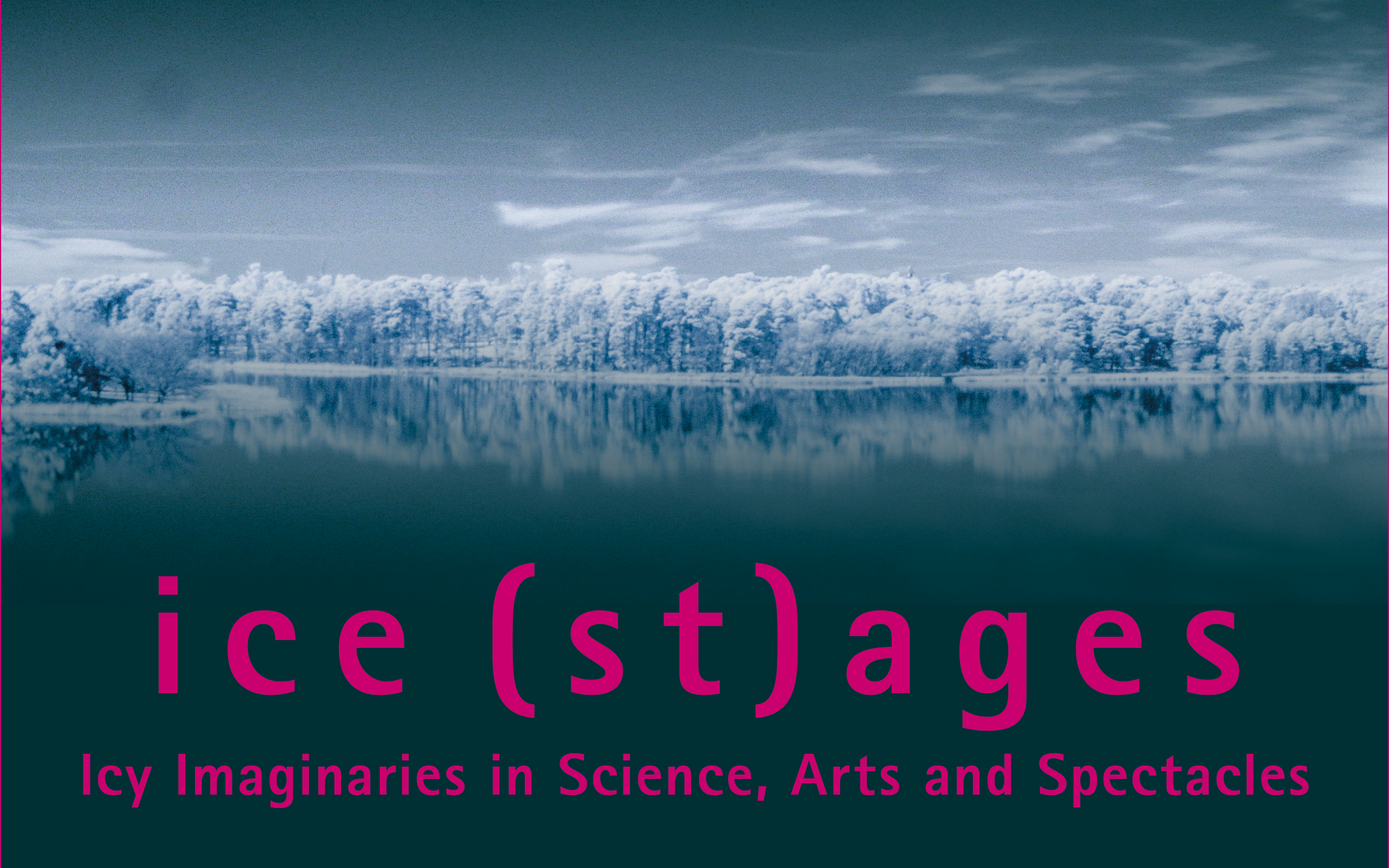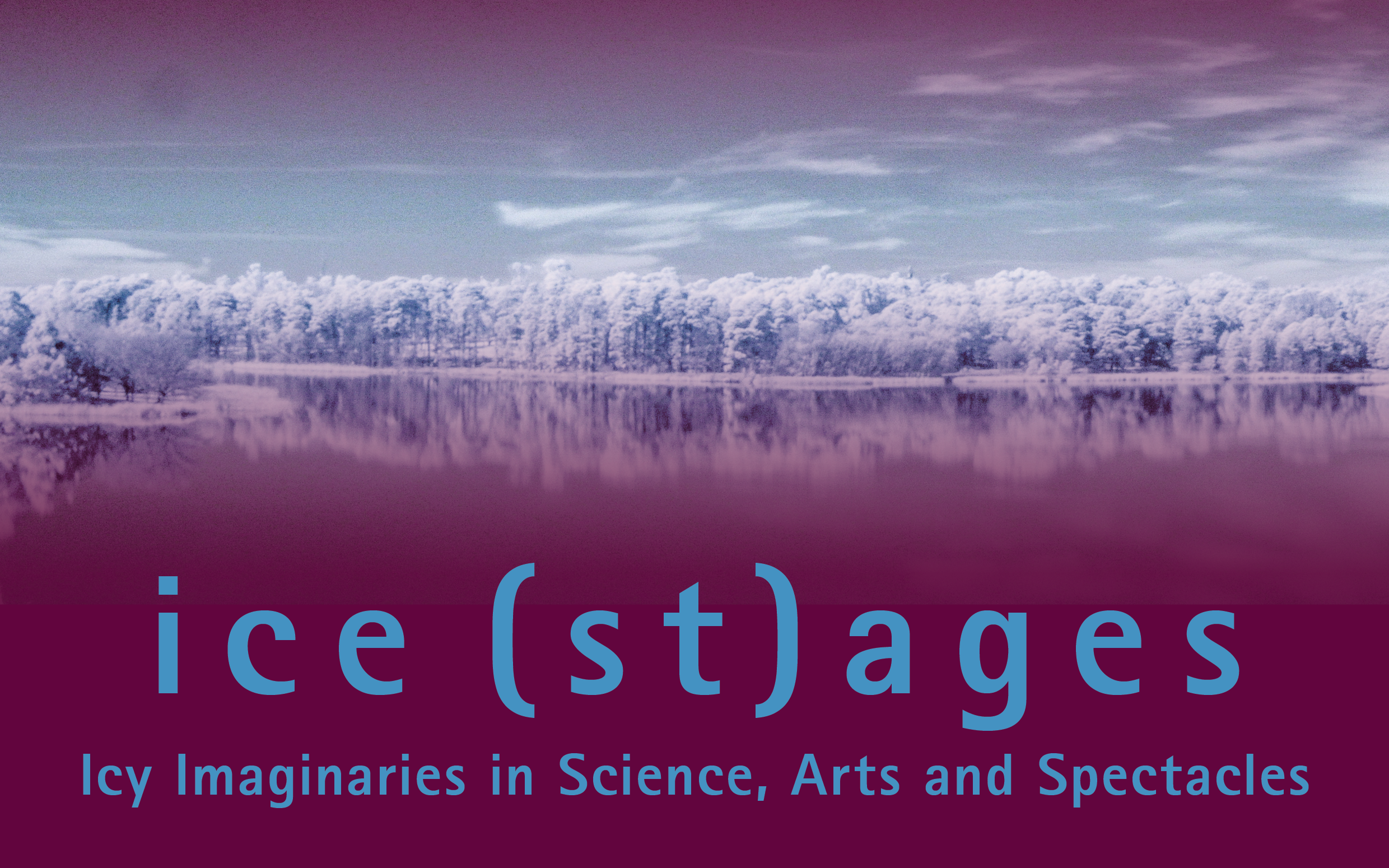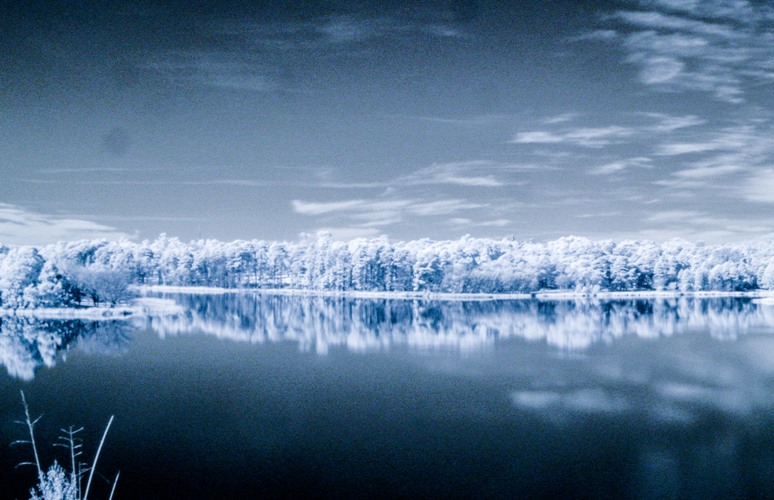
Icy Imaginaries in Science, Arts and Spectacles
A series of academic events
Climate change – in the form of melting ice – is one of the greatest challenges of the 21st century – a challenge that is difficult to measure, visualise and communicate. In public academic events and publications, our multifaceted Ice (St)Ages project brings together the perspectives of eminent and emerging scholars and students from fields as varied as science communication, art history, pop cultural studies, environmental studies, sciences studying ice, and artists to explore the power of (popular) arts and aesthetics to communicate ice research and the urgency of environmental action.
Examining the aesthetic strategies employed in images, (popular) visual fiction and narratives to convey meaning and awareness – and how they can be made fruitful for science communication – the project generates new perspectives on how our collective environmental responsibility can be addressed and communicated across disciplines and divers audiences. Together with our international collaborators we want to illuminate the cultural power of ice research and art – and contribute to a better understanding of the cultural work that emerges from our ecological crisis.
Artistic engagement with ice – for example in the form of paintings or panorama photography, sequential art or animation – has the power to evoke feelings and emotional experiences. Art exploring ice can be impressive and alarming, enjoyable and thought-provoking – and by means of art and aesthetics it can communicate environmental messages about urgency and, ultimately, human responsibility. Discover our events and activities on this page!

Our understanding of ice as a stage and means of communicating science implies that we focus on those art forms in which sensual aesthetics, performative gestures and narrative structures are particularly important. As central features of art in the context of climate awareness.
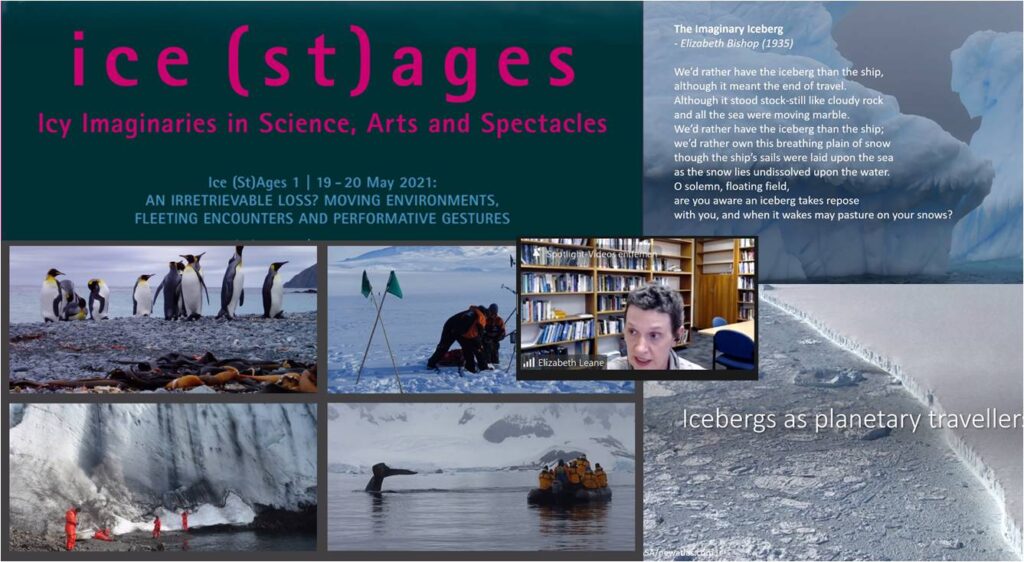
Ice (St)Ages 1: An Irretrievable Loss? Moving Environments, fleeting encounters and performative gestures
Our first symposium asked about the causes, but also the strategic use, of Icy Imaginaries in the fields of science, literature, arts and performances. As an agile and ephemeral material, ice not only functions as a topic or metaphor, but increasingly becomes an active agent of scientific and artistic communication about the melting poles. How can the hidden dynamics of Icy Imaginaries be described in the various disciplines? And in how far is the figure of melting ice used in order to stage the loss of entire ecosystems?
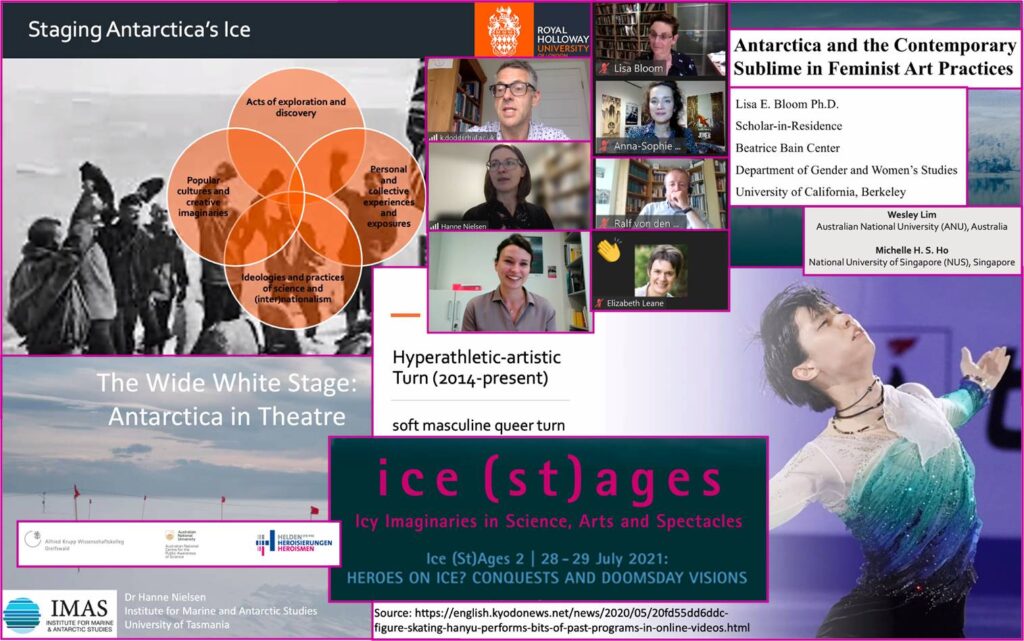
Ice (St)Ages 2: Heroes on Ice? Conquests and Doomsday Visions
The second symposium explored the western and gender-specific shaping of polar heroes on ice as a performative and highly-unstable construction and how its overwhelming aesthetics, immersion effects and doomsday scenarios are rooted in a culture of spectacles. The aim was to explore the use of ice – but also its agency – as a dynamic staging strategy for global (i.e. ecological, historical, and cultural) change.
Best of Ice (St)Ages 3: Play with Senses – Aesthetic Communication and the Performativity of Ice
The climate-critical communication of urgency thus goes hand-in-hand with attempts to generate and stage aesthetical evidence. The resulting proximity of art and science and its historical roots were central to our third symposium and were examined with a focus on mediating environmental knowledge in scientific and artistic performances as well as popular entertainment and media – comics and animated film in particular.
Video created by CPAS student Rishika Nair.
Occupying more than 20 million square kilometers of the Earth’s high-latitude and high-altitude landscapes, permafrost – or frozen ground – is not only a key component of our global climate, but it is arguably the most overlooked, invisible component of the cryosphere, or the world of ice. Yet, just as ice sheets in Greenland and Antarctica, or mountain glaciers around the world, which are very often depicted in the general media, permafrost regions are highly sensitive to climate change and human activities, and permafrost research is therefore of considerable scientific and societal importance. The “Frozen Ground Cartoons” project was born with the urge to make permafrost science accessible and fun for the general public, especially for school kids, students and teachers. The creation and release of a booklet of comic strips (in English) was the original outcome; however, the project quickly evolved in a series of ‘by-products’ including translations into several languages, augmented reality materials (maps, photos, videos, 3D drawings), a board game, an audio-book, etc. And this is not over!
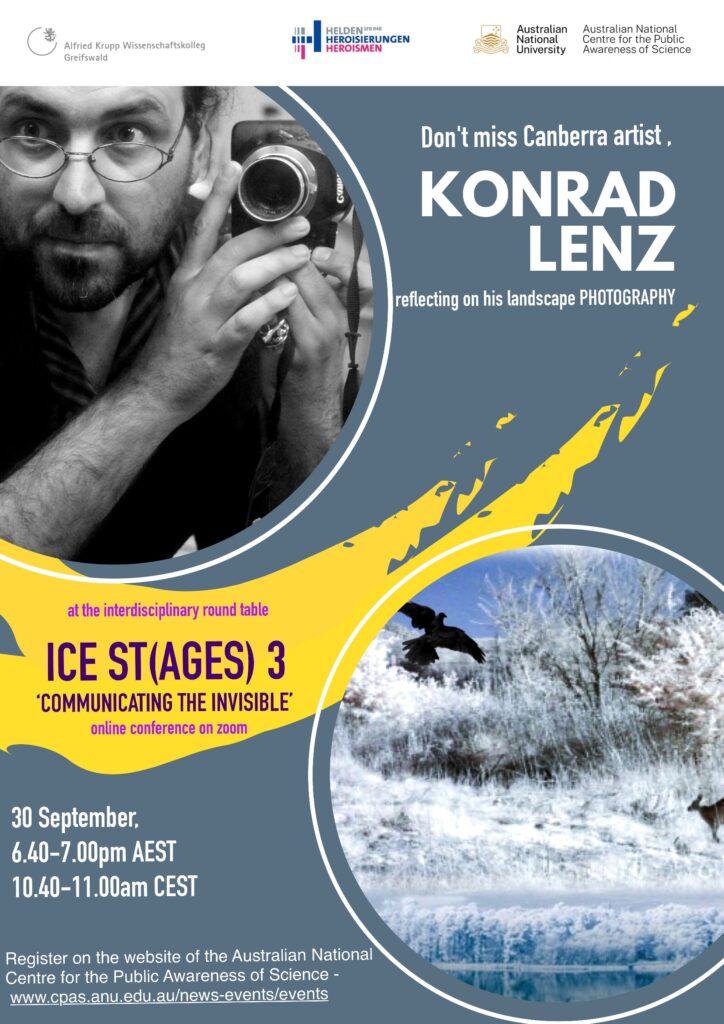
Walt Disney’s computer-animated “Frozen” (2013) is a film shaped by the creative potential of snow and ice. The CGI frost shading, the refraction of light through transparent ice blocks, and the controlling variations of snow strength (soft, crunchy, viscous, powdery) developed as part of r digital production are matched onscreen to protagonist Elsa’s capabilities of cryokinesis, which regularly explode from her wintery body. However, nowhere is the spectacle of ice more pronounced than in the snowman Olaf, whose playful capacity for regeneration marks a return to the ‘plasmatic’ sensibility that defined Disney animation in the 1930s and 1940s. ‘Plasmaticness’, formulated as both a political and aesthetic category by Russian filmmaker Sergei Eisenstein (1986), describes the ‘protean’ and shapeshifting nature of animated bodies that can effortlessly morph into new configurations. By examining Olaf’s unstable ‘polar’ and ‘plasmatic’ transformations as a form of resistance – alongside how “Frozen” persuasively represents snow and ice within a digital space – this paper argues that Olaf’s snowy peculiarity fully embodies the orderly, chaotic, and sensorial elements of ice.
A constant marker in popular visual culture—”Ice Age”, “Slava’s Snowshow”, “Disney on Ice”, “Frozen”—the theme of ice appears more specifically in association with comics from the earliest of visual narratives to contemporary creations. Pieter Bruegel’s winter scenes can be seen as telling a story, and the ‘proto-comics’ of early-modern emblem books, such as that by Geoffrey Whitney (1586), often reference ice in the narratives of life’s dangers and decay. The first modern comic, the “Glasgow Looking Glass” (1825), includes a frozen pond scene reminiscent of Henry Raeburn’s “The Skating Minister”, and in the early twentieth century Winsor McKay’s “Slumberland” fantasies (1905-1911) take us to icy realms. More recently Nicolas de Crécy’s “Période glaciaire” (2005), and Marc Azéma and Gilles Tosello’s “La Caverne du Pont d’Arc” (2015) have used snowscapes as the central setting. As well as providing a melt-in-the- mouth overview of the topos, we will consider connections that might suggest why the theme of ice and the format of comics should be defrosted together: the eternal nature of storytelling and of snow; the intrinsically hybrid and changing nature of these forms; the ability to express non-visual emotions visually.
What was the purpose of nineteenth-century European and Euro-American Arctic exploration, and why publish accounts of the voyages? In 1842, the second secretary of the admiralty John Barrow reflected that “by the copious details” contained in travel narratives, covering “every branch of astronomical and nautical science, of geography, meteorology, and other physical researchers — the charts and prints by which they are illustrated— they are made highly valuable to the man of science and taste, and well adapted for public libraries.” As indicated by Barrow’s quote, travel literature served multiple purposes and, accordingly, had multiple audiences. In my new book, “Explorations in the Icy North”, I show the significance of travel narratives in shaping European and Euro-American knowledge about the Arctic, and how narratives offered a space for the co-construction of Arctic imaginations, scientific expertise, and national and imperial identities. In this presentation, I will draw on examples from my book that show how travel writing also was a way for the so-called explorers to portray themselves in desired ways, as the narrative format enabled them to hide the fact that they drew heavily on Indigenous knowledge about the Arctic and relied on the expertise of Indigenous peoples to fulfil many of the official duties of the expeditions, including scientific research.
Artistic engagement with ice – for example in the form of paintings or panorama photography, sequential art or animation – has the power to evoke feelings and emotional experiences. Art exploring ice can be impressive and alarming, enjoyable and thought-provoking – and by means of art and aesthetics it can communicate environmental messages about urgency and, ultimately, human responsibility.
In mainstream US comics the antagonistic dynamic between (super)hero and (super)villain is, obviously, the key plot element that captures the readers interest and perpetuates the story towards the eventual victory of the forces of Good. Many of the colorful villains the heroes constantly face own powers based on patterns or themes, that often turn them into the mirror image of the hero. The dichotomy between the dark and brooding Batman and the supposedly bright Joker is a prime example for this dynamic. Other villains are based on certain categories of powers, for example superstrength for characters that take on super strong heroes, like Superman or Thor. However, the villains analyzed in this paper are all bound together by a different power as they master, to various degrees, a truly elemental force, the cold. From the frost giants of Norse mythology and their king Ymir, mainstays in the “Mighty Thor” comic book cosmos, to modern high tech villains like Flash-archenemy eponymous Captain Cold, cold-themed villains play a major role in the constant struggle of Good vs. Evil. They all represent and command a force that in its extreme is the opposite of life itself: the Cold.
Disney Pixar represents a corporation that is in the business of selling messages to the world. Claims about social issues, really. Most of us may know these for being wrapped in entertaining storylines that cultivate a sense of connectedness between the content and the viewer. From the sleeping princess without agency to the world-saving daughter of the chief who examines a young child’s perception of old vs new, the embedded coloniality in ‘Moana’, or an examination of shifting parental roles in ‘The Incredibles’. The significance of Disney’s global film fare, despite discrepant views about it, simultaneously mirrors social trends and reshapes them. Each individual Disney movie presents a coding system that popularises a message. Some of them deviate from the dominant paradigms of thought, thereby introducing into mainstream culture what Walter Benjamin hoped were counterhegemonic images that would engage bourgeois sensibilities. Sergei Eisenstein echoed this sentiment. He argued that the medium of animation held unique currency by shaping worlds and characters to suit ideas, express feelings in “the rejection of the constraint of form”. I engage in this presentation both Benjamin’s and Eisenstein’s concepts, arguing that Disney animation film, as in the example of ‘Frozen’ (2013), allows for the cartoon-mediated articulation of queer identities and liberation from constraint on their form.
Out now – the Ice (St)Ages Book!
